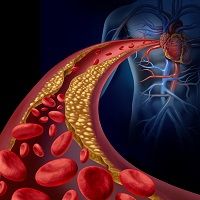Article
How PCSK9 Moved from Gene to Therapy and What Comes Next
Author(s):
It wasn't long ago that researchers first identified a piece of DNA that regulates cholesterol. This gene has been recently developed into a cholesterol-lowering agent and it's time to address where we go from here.

It wasn’t long ago that researchers first identified a piece of DNA that regulates cholesterol. This gene has been recently developed into a cholesterol-lowering agent and it’s time to address where we go from here.
Proprotein convertase subtilisin kexin 9, known as PCSK9, is a gene that acts like an instruction book to make a protein regulate cholesterol in the blood. Jay D. Horton, MD, explained how it quickly went from being just a part of DNA to a developed cholesterol-lowering agent at the 10th Annual Cardiometabolic Health Congress (CMHC 2015) in Boston, Massachusetts.
“We knew it did something to regulate cholesterol,” Horton, a professor of internal medicine and molecular genetics at the University of Texas Southwestern Medical Center, said during the CMHC 2015 conference. PCSK9 went from a validated target to being in clinical trials in just seven years. It began in 2003 when it was discovered by researchers in Montréal; this was also the year that it first appeared in literature. PCSK9 received target validation by 2006 and by the end of the year it had moved to animal studies. After four years it continued to human trials and the first PCSK9 inhibitor was approved by the US Food and Drug Administration (FDA) by mid-2015.
Overexpression of PCSK9 reduces LDLR protein in the liver. So in theory, deleting the gene would have the opposite effect. In a study, LD receptors went up when PCSK9 was deleted in mice. When this occurs in the liver, plasma and cholesterol levels go down. The researchers observed a 40% reduction in those levels. Therefore, the hypothesis was proven true in this instance as mice with no PCSK9 had increased levels of LDLR protein in the liver.
“Deleting the gene had a positive effect on cardiovascular events,” Horton confirmed. He noted that the OSLER-1 and -2 trials revealed a 51% reduction in cardiovascular events with the use of a PCSK9 inhibitor (140 mg every two weeks versus 420 mg every month).
Part of the research that Horton touched on was if PCSK9 activity occurs inside or outside of the cell. Another animal model revealed that the protein was secreted and worked inside of the blood — verified by biopsies before and after the experiment. After this was established, they were able to move to human models.
An important characteristic of PCSK9 is that it cleans itself and then folds. So although we know some information about PCSK9, the objective of many trials is to understand how and why the protein acts. Horton outlined four approaches for working with PCSK9:
Inhibit enzymatic activity
- Pharmaceutical companies would probably prefer this method
Inhibit PCSK9 synthesis
- Easiest approach
- Block movement from the endoplasmic reticulum (ER) to Golgi apparatus
Block PCSK9 secretion
- RNAI
- Antisense RNA
- Stops it from cleaning itself so that it doesn’t fold itself
Disrupt PCSK9/LDLR interaction
- Peptides or small molecule
- Anti-PCSK9 antibody
The fourth approach is the most popular, Horton pointed out. Using this strategy, a study found that infusion of catalytically inactive PCSK9 reduces LDLRs in the livers of mice.
“This was somewhat disappointing because it showed that catalysis isn’t necessary of the function of PCSK9,” Horton said at CMHC 2015. Other clinical trials have been underway to track these different approaches, and while promising, the results were only phase I.
“Genetics provided additional hints for where we should go in the future,” Horton said. Although there are a handful of questions still lingering, we do know that a reduction in cholesterol means a reduction in cardiovascular events — making PCSK9 a gene and therapy not to be ignored.
The session ended with a simple, yet very complex, question from the audience: Why do we have PCSK9? The truth is that we don’t know, according to Horton. We don’t understand a lot about the biology of plasma PCSK9 and plasma levels are not likely to be helpful unless we refine them.




